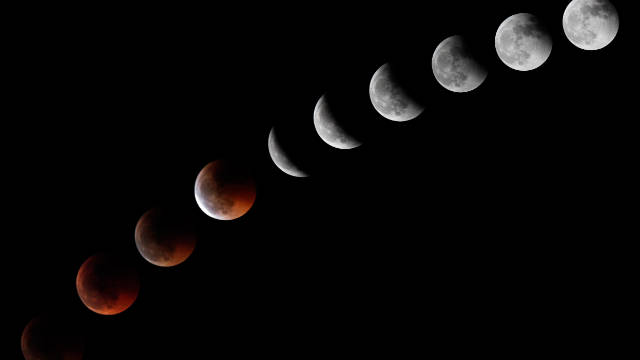
A lunar eclipse will occur Saturday, and all of the United States will be able to see some portion of it.
The West Coast will have "a more complete view" of Saturday's event and will be able to see the totality, the time when the Earth's shadow completely covers the moon, according to NASA.
That totality on the West Coast is timed as the moon sets and the sun rises, NASA said. The peak, when the moon is a deep red, will occur at 6:30 a.m. Pacific, NASA said.
The East Coast won't have such a nice view, NASA said. Atlantic seaboard residents will only see the earliest portion, when the moon begins to enter Earth's shadow, and the dimming will be very slight and may be difficult to see, NASA said.
The eclipse will last from 6:33 a.m. Eastern (3:33 a.m. Pacific) till 12:30 p.m. Eastern (9:33 a.m. Pacific), and totality will last 51 minutes, NASA said.
"A lunar eclipse occurs when Earth is directly between the sun and the moon, blocking the sun's rays and casting a shadow on the moon. As the moon moves deeper and deeper into Earth's shadow, the moon changes color before your very eyes, turning from gray to an orange or deep shade of red," the NASA website said.
"The moon takes on this new color because sunlight is still able to pass through Earth's atmosphere and cast a glow on the moon. Our atmosphere filters out most of the blue colored light, leaving the red and orange hues that we see during a lunar eclipse. If there are additional dust particles in the atmosphere, the moon will appear to be a darker shade of red," NASA said.
NASA's Lunar Reconnaissance Orbiter spacecraft, which is orbiting 31 miles above the moon, will get a front-row seat to the lunar eclipse, the last one of the year, NASA said.
The orbiter will record how quickly certain parts of the moon will cool off during the eclipse, NASA said
No comments:
Post a Comment